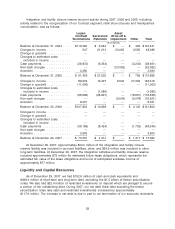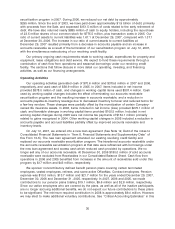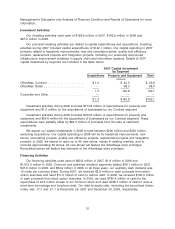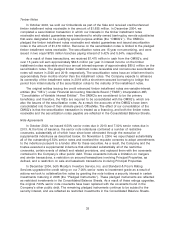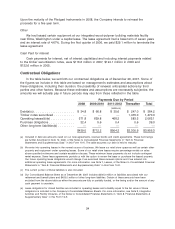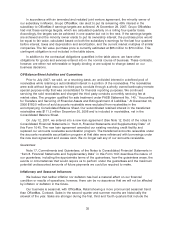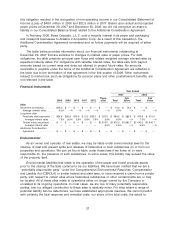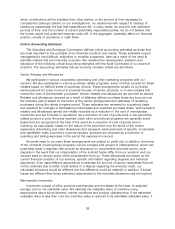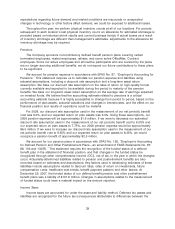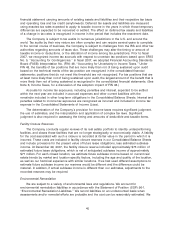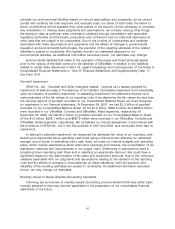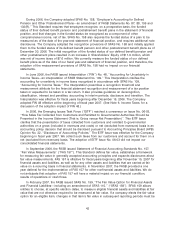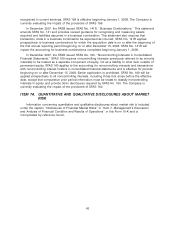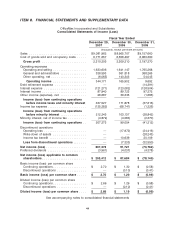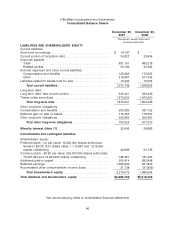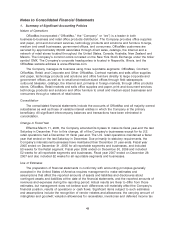OfficeMax 2007 Annual Report Download - page 43
Download and view the complete annual report
Please find page 43 of the 2007 OfficeMax annual report below. You can navigate through the pages in the report by either clicking on the pages listed below, or by using the keyword search tool below to find specific information within the annual report.expectations regarding future demand and market conditions are inaccurate or unexpected
changes in technology or other factors affect demand, we could be exposed to additional losses.
Throughout the year, we perform physical inventory counts at all of our locations. For periods
subsequent to each location’s last physical inventory count, an allowance for estimated shrinkage is
provided based on historical shrink results and current business trends. If actual losses as a result
of inventory shrinkage are different than management’s estimates, adjustments to the allowance for
inventory shrinkage may be required.
Pensions
The Company sponsors noncontributory defined benefit pension plans covering certain
terminated employees, vested employees, retirees, and some active OfficeMax, Contract
employees. Since our active employees and all inactive participants who are covered by the plans
are no longer accruing additional benefits, we do not expect our future contributions to these plans
to be significant.
We account for pension expense in accordance with SFAS No. 87, ‘‘Employer’s Accounting for
Pensions.’’ This statement requires us to calculate our pension expense and liabilities using
actuarial assumptions, including a discount rate assumption and a long-term asset return
assumption. We base our discount rate assumption on the rates of return on high-quality bonds
currently available and expected to be available during the period to maturity of the pension
benefits. We base our long-term asset return assumption on the average rate of earnings expected
on invested funds. We believe that the accounting estimate related to pensions is a critical
accounting estimate because it is highly susceptible to change from period to period, based on the
performance of plan assets, actuarial valuations and changes in interest rates, and the effect on our
financial position and results of operations could be material.
For 2008, our discount rate assumption used in the measurement of our net periodic benefit
cost was 6.3%, and our expected return on plan assets was 8.0%. Using these assumptions, our
2008 pension expense will be approximately $1.9 million. If we were to decrease our estimated
discount rate assumption used in the measurement of our net periodic benefit cost to 6.05% and
our expected return on plan assets to 7.75%, our 2008 pension expense would be approximately
$6.4 million. If we were to increase our discount rate assumption used in the measurement of our
net periodic benefit cost to 6.55% and our expected return on plan assets to 8.25%, we would
recognize a pension benefit of approximately $2.5 million.
We account for our pension plans in accordance with SFAS No. 158, ‘‘Employer’s Accounting
for Defined Pension and Other Postretirement Plans—an amendment of FASB Statements No. 87,
88, 106 and 132(R).’’ This statement requires the recognition of the funded status of a defined
benefit plan in the statement of financial position, and that changes in the funded status be
recognized through other comprehensive income (OCI), net of tax, in the year in which the changes
occur. Actuarially-determined liabilities related to pension and postretirement benefits are also
recorded based on estimates and assumptions. Key factors used in developing estimates of these
liabilities include assumptions related to discount rates, rates of return on investments, future
compensation costs, healthcare cost trends, benefit payment patterns and other factors. At
December 29, 2007, the funded status of our defined benefit pension and other postretirement
benefit plans was a liability of $131.9 million. Changes in assumptions related to the measurement
of funded status could have a material impact on the amount reported.
Income Taxes
Income taxes are accounted for under the asset and liability method. Deferred tax assets and
liabilities are recognized for the future tax consequences attributable to differences between the
39


